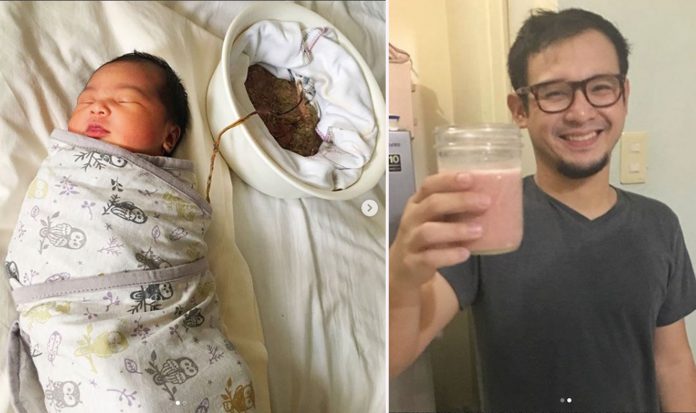Jennica Garcia-Uytingco recently gave birth to her second child with Alwyn Uytingco. On her Instagram post, Jennica surprised her followers with a photo of their newborn still attached to its fully intact placenta. The now mother of two is known for her advocacy on the natural ways of baby care, and now even of childbirth. According to her, she gave birth to her second baby through Lotus Birth.
What is Lotus Birth?
Lotus Birth is the practice of letting the baby’s umbilical cord remain attached until it naturally falls off. The umbilical cord will naturally detach within three to 10 days after birth.
This type of birth is an extension of natural childbirth. It reclaims the so-called third stage of birth and honors the placenta being the baby’s first source of nourishment. The prolonged contact of the baby to its umbilical cord is a transition period that will allow the baby to slowly and gently isolate itself from her mother’s body.
Upon birth, the umbilical cord of the baby, which is the connection between the baby and the placenta, is neither clamped nor cut. This is contrary to the common practice of delayed cord clamping.
The placenta will also remain untouched by the caregivers until a natural intense bonding between the baby and the mother has occurred for an hour or so. After the mother and baby experience their very first sublime bonding moment, the caregivers will then initiate care of the placenta by rinsing, drying, and applying of preservatives.
The placenta will be placed in a bowl or in a towel and will be positioned in a way that would allow for air circulation. Of course, the mother and caregivers have to ensure that the placenta is always in proximity to the baby. After several days — usually between 3 to 10 days, the umbilical cord naturally dies off and detaches from the baby’s belly.
Lotus Birth places high regard to the placenta. It respects the spiritual attachment of the placenta and the newborn. Although Lotus Birth may seem interesting and beneficial to some, leaving the placenta with the baby may put the baby at risk for infection. Once outside the womb, there is no more blood circulating in the placenta and is essentially dead tissue.
As with other means of childbirth, Lotus Birth has its pros and cons. If you want to learn more about Lotus Birth, please discuss it with your physicians or midwives.
Source: Jennica Garcia-Uytingco’s Instagram
Join our MomCenter Community on our Facebook page and Facebook group for more insights on motherhood and parenting.





